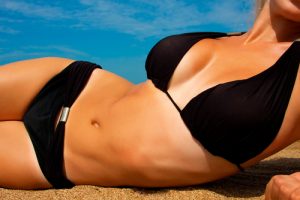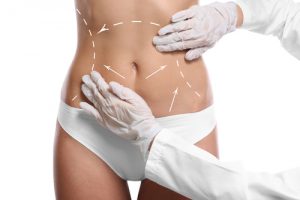When to Schedule Your Breast Augmentation
 Knowing when to schedule your breast augmentation can be tricky. The recovery timeline after surgery depends on the patient. However, giving yourself enough time beyond the expected recovery period can ensure you have the results you want when you want them. Most breast augmentation patients are excited to wear new tops that highlight their enhancements, so having surgery during colder months and being fully healed by summer is often desirable. Some of the main reasons why women should undergo breast augmentation in the winter and spring are listed below.
Knowing when to schedule your breast augmentation can be tricky. The recovery timeline after surgery depends on the patient. However, giving yourself enough time beyond the expected recovery period can ensure you have the results you want when you want them. Most breast augmentation patients are excited to wear new tops that highlight their enhancements, so having surgery during colder months and being fully healed by summer is often desirable. Some of the main reasons why women should undergo breast augmentation in the winter and spring are listed below.
Optimizing Comfort
Wearing post-surgery bandages and compression garments during warmer months can be very uncomfortable. Immediately following your breast augmentation, and for at least one week, you will be wrapped in surgical dressings. For several weeks after your breast procedure, you will have to wear a supportive or sports bra. Undergoing breast augmentation when it is cold outside makes it easier to relax and bundle up while you recover.
Maintaining Hydration
One of the most important things to do during recovery from any major surgery is to stay hydrated. Hydration helps the body heal, and it is much harder to retain those precious fluids during hotter seasons. Opting for breast augmentation in the winter and spring means you will likely sweat less, so your body does not run the risk of dehydration.
Bikini-Ready Body by Summer
The term “bikini-ready” means having a gorgeous body that is fit for the beach or poolside. Recovery after breast augmentation can last up to six weeks, but it may take a couple of months for the breasts to settle into their final shape. Making sure your beautiful new breasts are fully healed and settled by summertime is ideal for showing off your curvaceous figure.
For more information about breast enhancement surgery, or to schedule your breast augmentation consultation with Dr. Richard Lee, please call (941) 340-4731.
 One of the most common challenges for both men and women is trying to achieve a flatter, more evenly contoured abdominal area. After multiple children, weight loss, or the natural aging process, your abdominal region may have excess fat, loose skin, stretch marks, and muscles that have loosened or spread apart over time. In order to achieve a more attractive, flat, and contoured abdomen, people often turn to the two most common procedures: Liposuction and abdominoplasty, commonly known as a tummy tuck.
One of the most common challenges for both men and women is trying to achieve a flatter, more evenly contoured abdominal area. After multiple children, weight loss, or the natural aging process, your abdominal region may have excess fat, loose skin, stretch marks, and muscles that have loosened or spread apart over time. In order to achieve a more attractive, flat, and contoured abdomen, people often turn to the two most common procedures: Liposuction and abdominoplasty, commonly known as a tummy tuck.
What Is the Difference?
The main difference between the two procedures is what they can accomplish. Liposuction can remove excess fat in target areas and cause a small amount of skin to tighten. If there is a significant amount of excess fat, liposuction will not be effective in tightening a larger area of skin, leaving it loose and saggy. In this case, tummy tuck surgery can remove the excess skin and any stretch marks that may appear below the navel.
Tummy tuck surgery is an option for those who have weakened or separated abdominal muscles that need tightening. Childbirth and weight gain/loss can cause the abdominal muscles to weaken, resulting in an abdomen that bows outward in appearance. A tummy tuck will help make the abdomen appear flatter. In some cases, both procedures may be beneficial to achieve desired results.
The Procedure
Depending on the amount of fat removed, liposuction can be performed as an outpatient procedure at a doctor’s office under anesthesia. Liposuction is limited to fat reduction and requires small incisions, resulting in a less invasive procedure. However, your skin tone must be good in order to decrease chances of skin looseness after surgery.
Tummy tuck surgery is always performed under anesthesia as well. It is a longer and more complex procedure. An incision is usually made at or below the bikini line, and skin and fat are removed.
Recovery Timeframe
The recovery period between the two procedures is entirely different in duration. When liposuction is an outpatient procedure, most people can return to work in three to five days, and resume normal activities in two weeks. If you have additional fat that needs to be removed it may extend your recovery time. Strenuous activities require waiting about a month.
Incisions can be covered with dressings and bandages. A compression garment may be prescribed to wear to minimize swelling and help support the abdomen during healing. After undergoing tummy tuck surgery, expect to be off work and assisted with everyday tasks for about two weeks. Most people can return to work after two weeks, but healing will continue between four and six weeks. Strenuous activity may be restricted for several months to allow internal structures to heal completely.
Which Procedure Is Best for Me?
A good candidate for liposuction may be a person with good muscle tone, firm skin, and no excess of loose skin. Individuals with loose skin, stretch marks, excess fat, and weak abdominal muscles may want to consider a tummy tuck for a flatter, more toned midsection. The best way to decide which procedure is best for your needs and cosmetic desires is to consult a board-certified plastic surgeon to discuss your options. Call (941) 340-4731 for Trusted local specialists for beautiful results.
 Breast augmentation can create an obvious change in your figure. It allows you to customize the appearance of your breasts and enhance the contours of your body. Providing yourself with an extra boost in your appearance can also give you more confidence. However, the results of your breast augmentation are not guaranteed to be permanent. From changes in your personal preference to issues with the implants themselves, there are reasons why you may want to consider having a breast revision procedure performed.
Breast augmentation can create an obvious change in your figure. It allows you to customize the appearance of your breasts and enhance the contours of your body. Providing yourself with an extra boost in your appearance can also give you more confidence. However, the results of your breast augmentation are not guaranteed to be permanent. From changes in your personal preference to issues with the implants themselves, there are reasons why you may want to consider having a breast revision procedure performed.
Change in Implant Size
Personal preferences change as life circumstances change. You may find that you are dissatisfied with the original implant size you chose. In this case, your implants can be replaced with ones of a smaller or larger size. The ability to change size will depend on multiple factors that you will discuss in consultation with Dr. Lee.
Change in Implant Style
There are benefits to both saline and silicone implants, but as women see the final results of their augmentation or develop a different preference over time, they may decide that they want to change implant types. Saline implants are filled with a sterile saltwater solution. They are filled after being inserted into the breasts, so they can be adjusted if necessary during the procedure. The scars are typically shorter than with silicone implants, and there are more options for their location. Silicone implants are made of a thicker gel, so they are less likely to rupture. Additionally, they are said to feel more natural than saline. However, there are limitations regarding incision location, and scars tend to be slightly bigger.
Implant Rupture
There is a chance that breast implants may rupture, especially as they age. A rupture is characterized by a rip or tear in the implant shell. If this happens, the implants will need to be removed and/or replaced. Silicone and saline ruptures present differently; while saline implant ruptures are easily noticed, silicone ruptures may be more difficult to detect. After a saline rupture, your breast size will obviously deflate as the saline solution leaks out and is safely absorbed by your body. Silicone implant ruptures, on the other hand, may require an MRI to detect since the implants often maintain their shape. Potential signs of a silicone rupture include changes in breast size or shape, pain, or an abnormal feeling in the breast. If you suspect that your silicone implant has ruptured, it’s important to contact your surgeon.
Capsular Contracture
After breast augmentation surgery, some scar tissue will develop around the implant. However, in some cases, the scar tissue tightens and hardens around the breast implant, which is known as capsular contracture. The first signs may be a change in breast shape and a change in firmness. The breast may begin to feel tight and painful. While it can happen at any point after breast augmentation, capsular contracture most commonly occurs in the first two years after the surgery. This condition requires the removal of the surrounding scar tissue (capsulectomy).
Rippling
One of the most visible problems after breast augmentation is rippling of the breast implant, where the edges of the implant are visible through the skin. This can happen for multiple reasons, including not having much tissue between the skin and implants and poor technique by the surgeon. Rippling is usually experienced with saline implants, but it can occur with silicone gel filled implants as well. Subglandular placement may also show more visible implant rippling. In these cases, the implants may be moved to submuscular placement, and the implants may need to be replaced with smaller ones for patients without adequate breast tissue to cover larger implants.
These are not the only reasons why you may want or need to have a breast revision procedure. If you feel that breast revision may be right for you, please contact us to set up a consultation with Dr. Lee. Call (941) 340-4731 for Trusted local specialists for beautiful results.
Breast augmentation is a highly customizable procedure. You have to make several decisions before undergoing breast augmentation, including whether to place the implants over or under the pectoral muscle, where your incisions should be created, and what size implants you want. You will also need to decide if you prefer silicone or saline implants. There is no right or wrong answer when it comes to implant type, but there are some things to consider before making a decision.
Silicone
Silicone implants are composed of a silicone shell filled with silicone gel. They are FDA approved for surgical enhancement in patients age 22 and older.
Benefits
- Look and Feel: Silicone implants have a more natural look and feel than saline implants. They are designed to mimic breast tissue more accurately.
- Less Rippling: Silicone implants are less likely to produce a rippled appearance than saline implants.
- Less Likely to Rupture: Statistically, silicone implants have a lower rupture rate and do not deflate the same way that saline implants do.
Saline
Saline implants are composed of a silicone shell filled with sterile saline solution. They are FDA approved for surgical enhancement in patients age 18 and older.
Benefits
- Lower Cost: Saline implants are more cost-efficient than silicone implants.
- Adjustable Size: The size of saline implants can be adjusted during surgery to create the most symmetrical breast profile.
- Smaller Scars: Because saline implants are filled after insertion, they require a smaller incision and produce smaller scars than silicone implants.
What Type of Implant Should I Choose?
The best way to decide which implant type is most suitable for your needs and cosmetic desires is to schedule a private consultation with a board-certified plastic surgeon. During your discussion, you and your surgeon will go over your options and come up with a surgical plan tailored to your preferences. Call (941) 340-4731 for Trusted local specialists for beautiful results.
 It can be daunting to take time off of your workout routine to recover from any surgery if you are used to an active lifestyle. However, you will find that resting long enough to let your body heal will make the recovery process more pleasant and thorough. The amount of time you will need to limit your activity after breast augmentation surgery will vary depending on what techniques were used and how the implant was placed.
It can be daunting to take time off of your workout routine to recover from any surgery if you are used to an active lifestyle. However, you will find that resting long enough to let your body heal will make the recovery process more pleasant and thorough. The amount of time you will need to limit your activity after breast augmentation surgery will vary depending on what techniques were used and how the implant was placed.
Recovery Timeline
Dr. Richard Lee will give you detailed post-op instructions tailored to your needs during your consultation appointment. You may want to use the following as a guideline:
First Week
- You should walk as soon as you are able to because that will promote blood circulation and prevent blood clots.
- Walk for a few minutes every few hours, but be sure not to overexert yourself.
- You can shower the next day after surgery.
- Continue walking, but do not elevate your heart rate too much.
- Do not lift, pull, or push anything that strains your body or causes pain.
Second to Fourth Week
- The second week is when you can start slowly reintroducing activities to your routine that elevate your heart rate.
- Moderate activity, like some yoga and light elliptical or spin bike usage, may be allowed during this time.
- If Dr. Lee clears it, you can perform more strenuous exercises by the third week.
- Depending on how your recovery has gone up to this point, you may be free to return to most lower-body activity by the fourth week of recovery.
Sixth Week
- Usually, patients can resume all of their usual exercises by this time.
- It is between the sixth and eighth week of recovery that patients can return to full body activity, including upper body workouts.
Why It’s Important to Rest
It is vital to the healing process not to do too much physical activity against Dr. Lee’s instructions. “No pain, no gain” is not the mantra to follow when it comes to your post-surgery activity. It is essential to listen to your body and not to push your physical limits too far, or you may experience complications such as:
- Swelling: Overexerting yourself causes your blood pressure to rise, which exacerbates and prolongs swelling. You will need to spend more time recovering, and the extra swelling can be quite uncomfortable.
- Hematoma: Exercising before you have healed enough can cause a tear in your breast tissues, which may lead to a pocket of blood called a hematoma. A hematoma will need to be removed, further prolonging your recovery.
- Capsular Contracture: Heavy activity before you have healed enough from breast augmentation can cause capsular contracture, an uncomfortable condition that can only be corrected with surgery.
Call (941) 340-4731 for Trusted local specialists for beautiful results.
